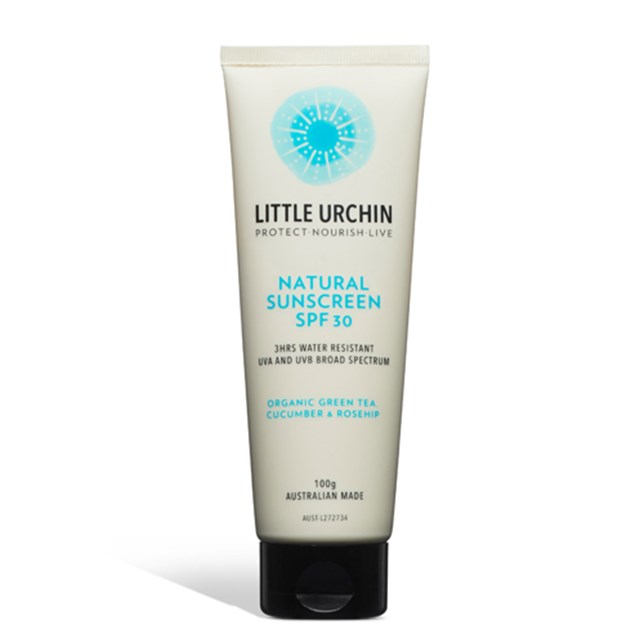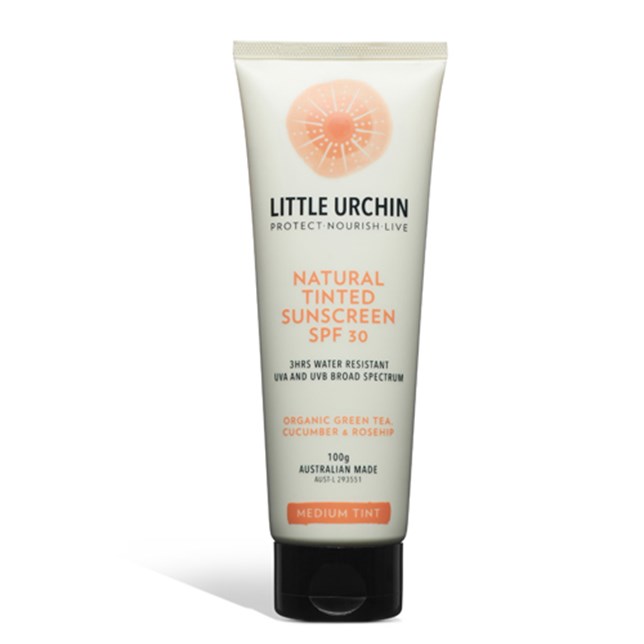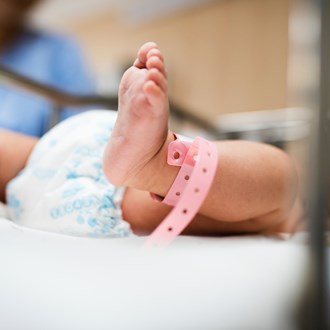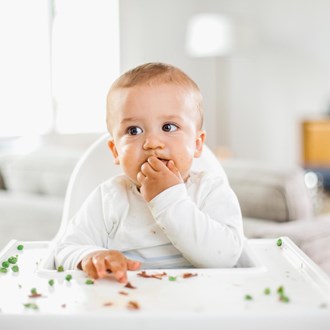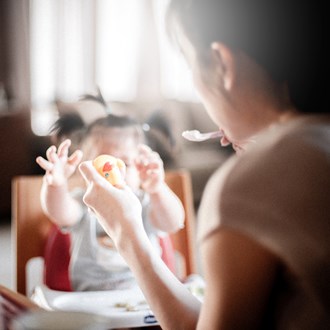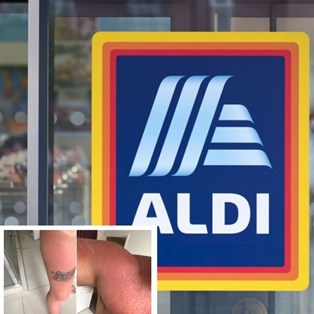Is it safe to use sunscreen on babies? The new sun protection rules

Is it safe for babies under six months to wear sunscreen? Can they have sun exposure during the cooler months? What sunscreens are safe for babies? And how long in the sun is safe?
Yep, typical questions almost every mum with a baby asks at some stage. But getting a clear and definitive answer is much harder to come by. And that’s because there’s different thoughts, stands and approaches to the issue.
So we’ve done the hard work for you and rounded up the latest research, expert advice and what the health bodies ‘official approach’ recommends…
Q. Can babies under six months old use sunscreen?
A. The general consensus is no, babies under six months old should not wear sunscreen and babies up to 12 months of age should avoid sunscreen unless it’s a last defence. Instead, parents can protect babies from the sun by:
- Avoid prolonged exposure in the sun and staying away from reflective sunlight. Staying out of direct sunlight and away from reflective sunlight. The World Health Organization recommends avoiding direct sunlight when UV levels reach 3 or above. However, new research by the Australian National University and New Zealand’s National Institute of Water and Atmosphere Research found that even on a low-UV day DNA damage can occur, and we should have sun protection all year round. And for those with fair skin (that’s you, baby!) or Type 1 skin, sun exposure damage can be caused in as little as 10-15 minutes.
- Wearing protective clothing, hats and eyewear when exposed to the sun. Think a broad rim or legionnaire hat that covers baby’s ears, face and neck. Wraparound sunglasses with UV protection should meet Australian Standard requirements for sunglasses.
- Wearing clothing with a UPF15+ (considered good) to UPF50+ (considered excellent) rating.
- And of course the Cancer Council Australia’s message to ‘Slip on cool, loose and densely woven clothing to cover baby’s skin, Slap on a hat that covers baby’s face, ears and neck and Slop on sunscreen (above age 1)’.

Everything but the kitchen sink... The sun smart kit: A pop-up tent, to keep the littlies in the shade, Rays Outdoor, member price, $119; Cancer Council Victoria Blue Waves Legionnaires hat, $$22.95, and All-In-One, $44.95; Little Urchin Natural Sunscreen, $24.95 - Avoid prolonged exposure in the sun, Wearing protective clothing, hats and eyewear when exposed to the sun); Baby Banz sunglasses, $24.95; Sooki Baby Multi Stripe All In One Zip Rashie, $42.95; Cancer Council Girls Long Sleeve Rash Vest 50+UPF available at Big W, $20.
Q. Why is it recommended to avoid using sunscreen on babies under 12 months of age?
A. There are two main reasons, but the official argument most bodies put forward, including the Cancer Council, is because babies have sensitive skin and are more likely to suffer a reaction. And, that babies older than six months should only have sunscreen applied as a last line of defense, after avoiding direct sunlight, wearing covering clothing, a hat and seeking shade.
However, there is the ‘toxicity’ issue too, with the potential for toxic chemicals used in the manufacture of sunscreens being absorbed into babies’ (and adult’s) skin. But no one wants to mention this without hard-ass science and facts backing them up. Or deep pockets and a Philadelphia lawyer legal team behind them.
Some dermatologists recommend avoiding sunscreen use on babies under six months because a young babies’ skin absorbs more due to the thickness (or lack of thickness) in a baby’s skin compared to older children and adults skin. However, other dermatologists disagree, saying that young babies’ skin is no different to babies over six months or young children.
Q. So what chemicals in sunscreens have been tested and approved for use?
A. Well that’s just the thing – the rules change constantly.
In Australia, sunscreens with a SPF greater than 15 are regulated as therapeutic goods by the TGA. These sunscreens can only use TGA approved ingredients that have been assessed for safety.
However, what appears on the ‘approved’ list can change in a flash.
For example, Palau just became the first country to ban toxic sunscreen in an effort to protect its reefs, lakes and marine life. The ban will prevent sunscreens containing a range of damaging chemicals from being imported or sold in Palau. Tourists will also have sunscreen's containing the banned chemicals confiscated upon entry.
In the United States, before an ingredient can be used in sunscreen it must be approved by the Food and Drug Administration (FDA). Currently the FDA has approved ingredients for use in sunscreen which includes oxybenzone, octinoxate, titanium dioxide and zinc oxide. However, in January this year (2018), Hawaii became the first American state to pass a bill to ban sunscreens which contain oxybenzone and octinoxate, based on a study which showed these chemicals (which are used in more than 3,500 sun protection products worldwide and wash off beach-goers into coral reef environments) “have significant harmful impacts on Hawaii’s marine environment and residing ecosystems.” While the study is not focused on toxicity to humans, it did show significant effects on the marine life, including inducing neurological behavioural changes in fish, inducing feminisation in adult male fish and increasing reproductive diseases in sea urchins, parrotfish and other species. This can be linked to studies which show some sunscreens which contain chemical filters contain hormone disruptors. If the law is approved, it will come in to affect in 2021 – and other states and countries are sure to follow.
Q. So what sunscreens should you look for?
A. We don’t want to frighten the bejeezus out of you so you’re too scared to ever venture outdoors with baby again, but this is what you need to know.
There’s two main types of sunscreens - mineral, and those that contain chemical filters.
Mineral-based sunscreens: the safest
Mineral-based sunscreens tend to leave a white residue on the skin, but it’s easily washed off. Mineral sunscreens, also called sunblock, contain the active ingredients titanium dioxide or zinc oxide and protect the skin by deflecting the sun’s rays.
Most experts agree that when it comes to baby and child safety, the safest bet for babies over six months who require sunscreen is to choose mineral sunscreens.
Chemical filter sunscreens: best to avoid
The second type of sunscreen is those that contain chemical filters and typically include some or a combination of the following active ingredients: oxybenzone, avobenzone, octisalate, octocrylene, homosalate and octinoxate.
Plus, some sunscreens combine a combination of both mineral and chemical filters.
Safer Again!
Remember to keep the kids out of direct sun exposure and when that is not possible, to cover them in protective clothing - a legionnaires hat that covers the neck, face and ears is best, or a wide brim hat. Ditch the kids fashion sunglasses and make sure you have Australian Safety Standards approved UV protection sunnies. Choose UPF50+ clothing and swimmers that cover as much of the skin as possible (long sleeve swim suit or rashies and shorts). And ‘slop’ on some zinc based sunscreen regularly.
Enjoy those rays safely!
Sunscreen S.O.S
This story was brought to you by LITTLE URCHIN Natural Sunscreen, $24.95, the all-natural, toxic-free sunscreen that’s good for you and the planet. Features include: SPF30, 3 hours water resistant, UVA and UVB broad spectrum sunscreen, organic green tea,cucumber, rosehip and zinc oxide approved by the TGA. Suitable for babies from six months, children and adults.
Always read the label. Wearing protective clothing, hats and eyewear when exposed to the sun.
BUY IT - related products & reviews

Franki Hobson is a women’s lifestyle journalist and editor with more than twenty years’ experience. Her areas of expertise include parenting and health and well-being. Franki has two gorgeous boys, Maxwell, 10, and Louis, 1 ½.
Brought to you by



